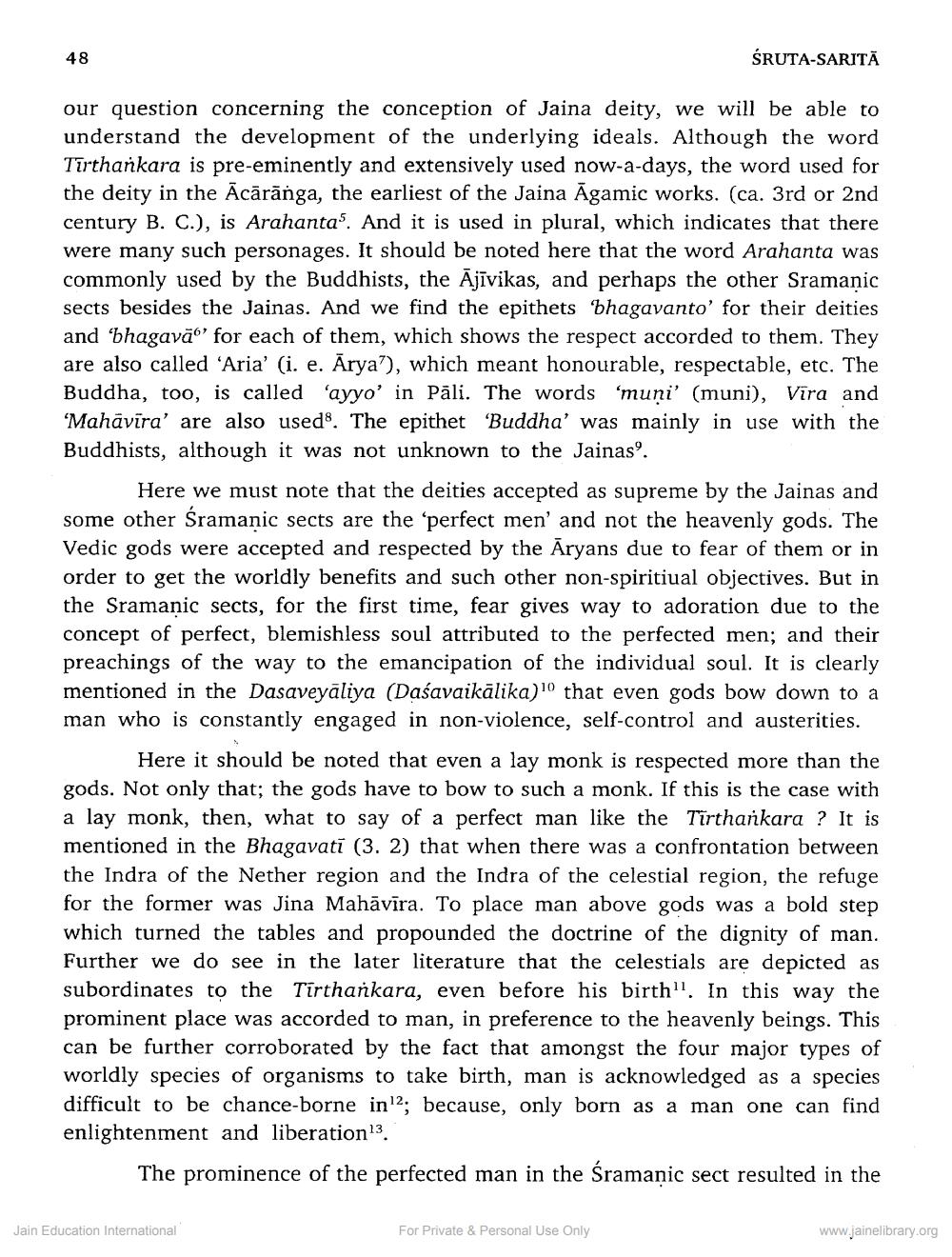________________
48
our question concerning the conception of Jaina deity, we will be able to understand the development of the underlying ideals. Although the word Tirthankara is pre-eminently and extensively used now-a-days, the word used for the deity in the Acaranga, the earliest of the Jaina Agamic works. (ca. 3rd or 2nd century B. C.), is Arahanta3. And it is used in plural, which indicates that there were many such personages. It should be noted here that the word Arahanta was commonly used by the Buddhists, the Ājīvikas, and perhaps the other Sramanic sects besides the Jainas. And we find the epithets 'bhagavanto' for their deities and 'bhagava" for each of them, which shows the respect accorded to them. They are also called 'Aria' (i. e. Ārya'), which meant honourable, respectable, etc. The Buddha, too, is called 'ayyo' in Pāli. The words 'muni' (muni), Vīra and 'Mahāvīra' are also used. The epithet 'Buddha' was mainly in use with the Buddhists, although it was not unknown to the Jainas9.
ŚRUTA-SARITĀ
Here we must note that the deities accepted as supreme by the Jainas and some other Śramanic sects are the 'perfect men' and not the heavenly gods. The Vedic gods were accepted and respected by the Aryans due to fear of them or in order to get the worldly benefits and such other non-spiritiual objectives. But in the Sramanic sects, for the first time, fear gives way to adoration due to the concept of perfect, blemishless soul attributed to the perfected men; and their preachings of the way to the emancipation of the individual soul. It is clearly mentioned in the Dasaveyāliya (Daśavaikālika)1o that even gods bow down to a man who is constantly engaged in non-violence, self-control and austerities.
Here it should be noted that even a lay monk is respected more than the gods. Not only that; the gods have to bow to such a monk. If this is the case with a lay monk, then, what to say of a perfect man like the Tirthankara ? It is mentioned in the Bhagavati (3. 2) that when there was a confrontation between the Indra of the Nether region and the Indra of the celestial region, the refuge for the former was Jina Mahāvīra. To place man above gods was a bold step which turned the tables and propounded the doctrine of the dignity of man. Further we do see in the later literature that the celestials are depicted as subordinates to the Tirthankara, even before his birth". In this way the prominent place was accorded to man, in preference to the heavenly beings. This can be further corroborated by the fact that amongst the four major types of worldly species of organisms to take birth, man is acknowledged as a species difficult to be chance-borne in12; because, only born as a man one can find enlightenment and liberation13.
The prominence of the perfected man in the Śramanic sect resulted in the
Jain Education International
For Private & Personal Use Only
www.jainelibrary.org




